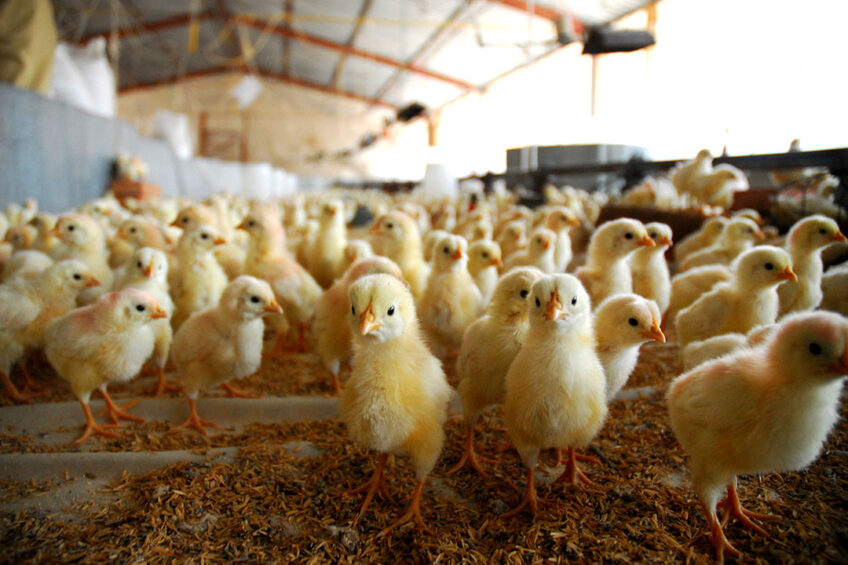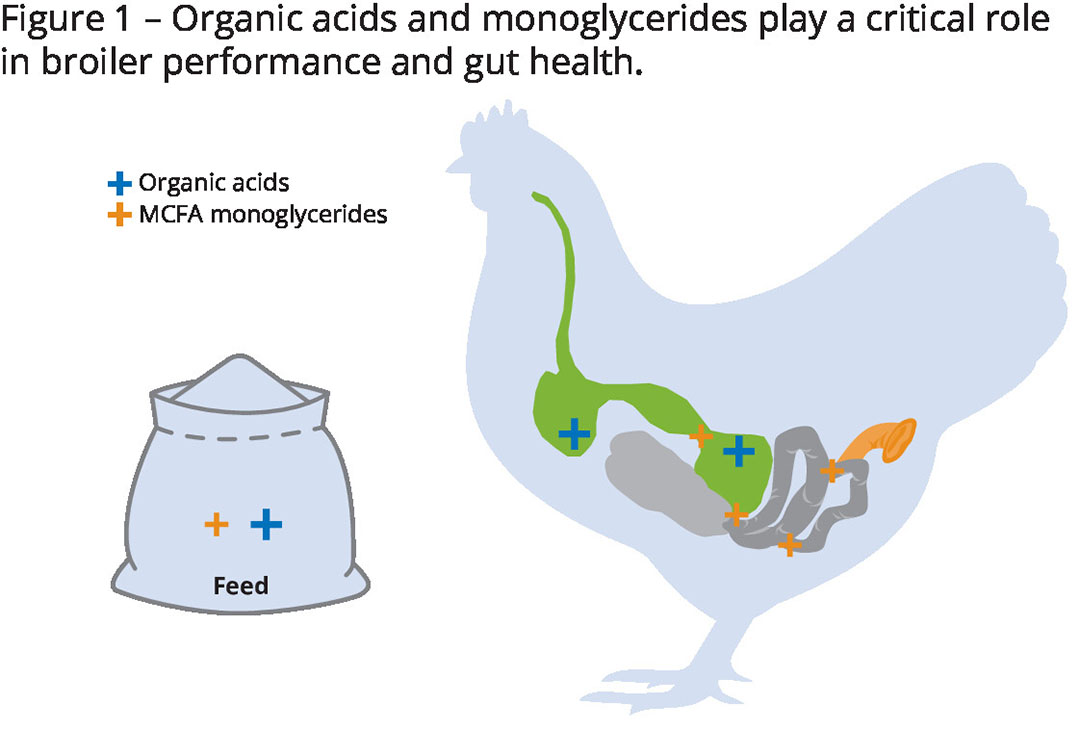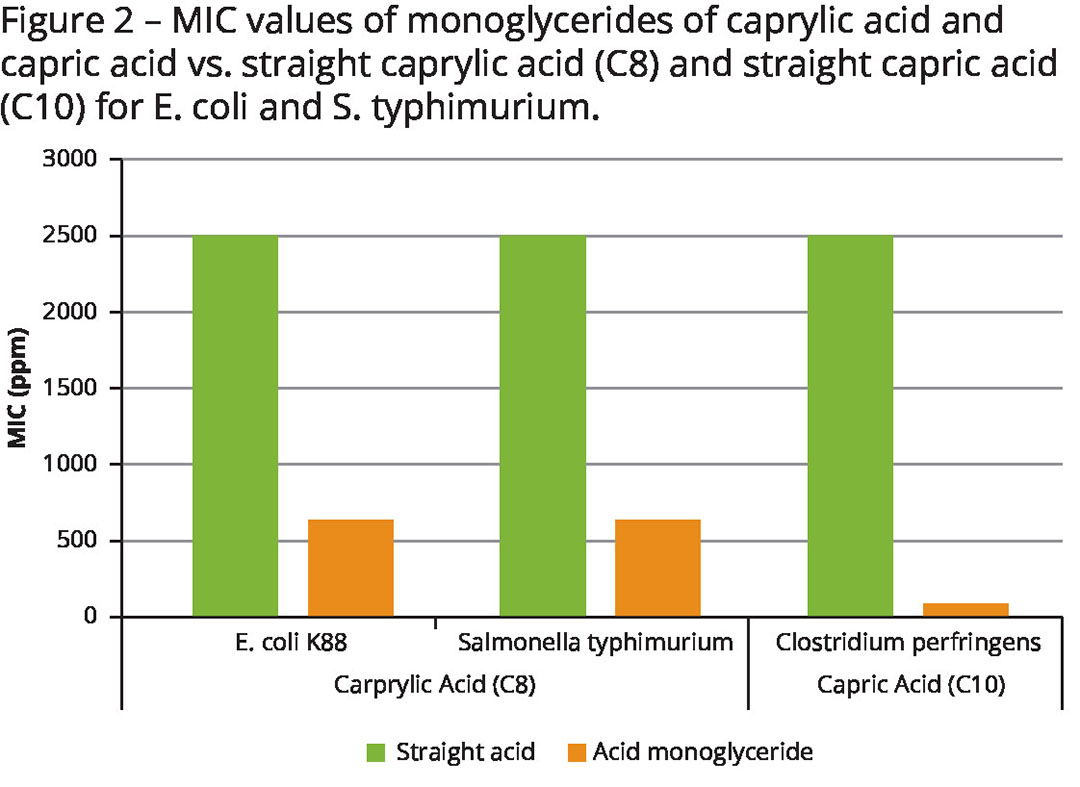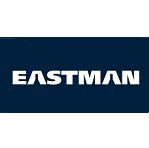Need for holistic approach to poultry gut health

Fast-growing broiler strains have high feed intake, which can cause an oversupply of nutrients in the intestinal lumen. The birds are under severe metabolic pressure and oxidative stress. This, coupled with subclinical coccidiosis and dietary stress, creates ideal conditions for bacterial enteritis, wet litter, and foot pad lesions.
There is a need for an integrated approach with a focus on control of bacterial growth on the other hand and adaptive response mechanisms to reduce inflammation and oxidative stress on the other. Organic acids and monoglycerides play a critical role in broiler performance and gut health, especially under challenging conditions.
Dietary stress
Dietary stress is triggered by poor-quality feed ingredients such as oxidised fat sources, mycotoxin contaminated feedstuffs, and antigens in soy, the main plant-based protein source in broiler diets. This can increase the oxidative stress status of the broiler, either directly or indirectly, by triggering inflammation in the gut and impairing barrier function. Therefore, choosing high-quality, well-processed, and hygienic raw materials is particularly important.
Causes of intestinal inflammation
The microbiota consists of both commensals as well as pathogenic bacteria, such as E. coli, but problems only really occur when the normal ileal microbiota is overgrown by caecal pathogenic bacteria, such as Clostridium perfringens, amplified by anti-peristaltic movements. This translocation of the microbiota in these high-performing birds causes extra local inflammation and oxidative stress in the mucosa. Due to damage to the intestinal cells, morphological changes occur and consequently, there is poor absorption of nutrients, which further increases the oversupply of nutrients in the lumen and the vicious circle starts again.
Once pathogenic bacteria slip through the impaired gut barrier – so-called bacterial translocation – they are transported throughout the body via the bloodstream, causing inflammation in other organs, such as the joints. A relevant example of this is the spondylitis outbreaks in broilers due to Enterococcus cecorum.
Straight organic acids as an important gastric barrier
 A blend of straight organic acids of formic and propionic acid is an important barrier for acid-sensitive bacteria such as E. coli. This is effective in the feed while also being an important barrier against bacteria in the crop, proventriculus and gizzard. Moreover, since pepsin has a pH optimum of 2, formic acid ensures this pH optimum for optimal protein digestion. Consequently, less undigested protein in the hindgut also means less substrate for the overgrowth of pathogenic caecal bacteria, such as Clostridium perfringens (Figure 1).
A blend of straight organic acids of formic and propionic acid is an important barrier for acid-sensitive bacteria such as E. coli. This is effective in the feed while also being an important barrier against bacteria in the crop, proventriculus and gizzard. Moreover, since pepsin has a pH optimum of 2, formic acid ensures this pH optimum for optimal protein digestion. Consequently, less undigested protein in the hindgut also means less substrate for the overgrowth of pathogenic caecal bacteria, such as Clostridium perfringens (Figure 1).Butyric acid strengthens intestinal barrier
Butyric acid derivatives play a role in gut and overall health in the prevention of local and systemic inflammation, and in providing the building blocks for strong systemic immunity, reducing oxidative stress. Butyric acid derivatives help maintain the integrity of the intestinal barrier, by production of mucin secretion and immunoglobulins. Healthy tight junctions between enterocytes are an important barrier for bacteria. Butyric acid can affect both innate and adaptive immune cells.
Medium chain monoglycerides effective microbial modulators
Monoglycerides are glycerol monoesters of organic acids, i.e., a glycerol molecule is covalently bound to an organic acid on position 1. As a result, no dissociation occurs, and they are not dependent on pH for their activity, meaning that the monoglycerides can elicit their activity further into the GI tract. This chemical structure also means that monoglycerides interact directly with the cell membrane of bacterial cells, which is different to the mode of action of straight organic acids.
 Medium-chain monoglycerides are more effective microbial modulators compared to straight medium chain fatty acids as evidenced by differences in the minimum inhibitory concentration (MIC) against different bacteria. These findings have been confirmed in research conducted in Eastman’s microbiology lab (Figure 2).
Medium-chain monoglycerides are more effective microbial modulators compared to straight medium chain fatty acids as evidenced by differences in the minimum inhibitory concentration (MIC) against different bacteria. These findings have been confirmed in research conducted in Eastman’s microbiology lab (Figure 2).
Monoglycerides of caprylic acid (C8) are mainly effective against Gram negative bacteria, such as E. coli and Salmonella, whereas monoglycerides of lauric acid (C12) are mainly effective against Gram positive bacteria, such as Clostridium perfringens and Enterococcus cecorum. Monoglycerides of capric acid (C10) are effective microbial modulators for both Gram negative and positive bacteria. Monoglycerides are non-corrosive and have reduced odour, which makes them very easy to handle.
Combine straight organic acids with different monoglycerides
Combining straight short chain fatty acids (formic, propionic acid) with monoglycerides of butyric and medium chain fatty acids is the most effective strategy to control pathogen growth in the whole gastro-intestinal tract and support gut health. For feed applications, Eastman’s Acitra liquid and solid product portfolio provides this first gastric barrier against pathogens. The synergies between the different monoglycerides of short and medium-chain fatty acids have been harnessed in Eastman’s Entero-Nova liquid and solid solutions for feed.
For water applications, the Eastman Protaq Bond portfolio provides an all-in-one solution with acidifying formic acid – both non-buffered and buffered, propionic acid and monoglycerides. Specific challenges require different solutions and products. While the use of monoglycerides in general has been well established in recent years, Eastman also develops tailor-made solutions for specific health challenges in poultry and pigs. This approach is supported by an industry-leading and flexible manufacturing facility in Ávila in Spain.
References are available on request.


